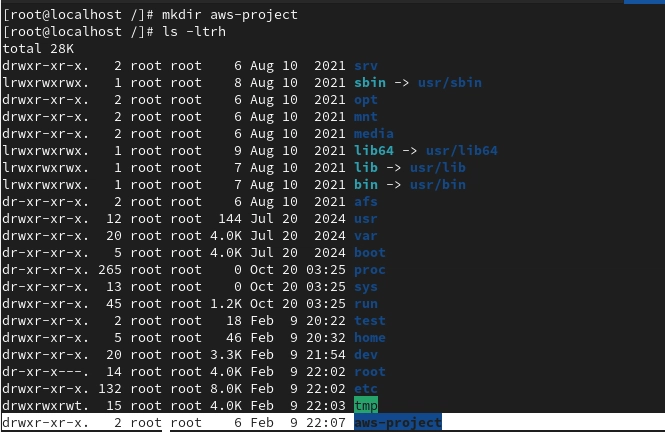Introduction
As part of my 30 Days of Linux Challenge (for RHCSA + RHCE Fast-Track training with the Cloud Whistler community, led by Ali Sohail), I’m diving deeper into one of the most essential Linux commands, mkdir.
Whether you're organizing personal files or setting up complex directories for projects and servers, mkdir (make directory) is where structure begins. And trust me good structure leads to great systems.
Index
- What is mkdir
- Simple Use Case
- Real World Scenarios and Tips
- Common Pitfalls
- Permissions and Recommendations
- Quick Summary
What is mkdir?
mkdir stands for make directory. It's used to create new folders (directories) in your Linux file system.
Syntax:
mkdir [options] directory_name
✅ Simple Use Case
Create a single folder:
mkdir aws-project
Now you have a folder named aws-project in your current directory.

📂 Real World Scenarios and Tips
1. Create Multiple Directories in One Go
mkdir folder{1,2,3}
💡 Great for setting up project structures quickly.

2. Create Nested Directories
mkdir -p work/projects/clientA
💡 The -p flag lets you create parent directories if they don’t already exist.
3. Use in Automated Scripts
Creating log or backup folders dynamically in shell scripts is a common practice:
mkdir -p /var/logs/$(date +%F)
💡 Useful for system automation and maintenance tasks.
4. With Variables
project="myapp"
mkdir "$project"/{src,bin,docs,tests}
💡 Creates a folder structure for codebases, very handy in dev environments.
⚠️ Common Pitfalls
- Using
mkdirwithout the-pflag when the parent folder doesn’t exist will throw an error. - Quoting directory names is crucial if they contain spaces:
mkdir "My Folder"
🔍 Permissions and Recommendations
You need write permissions in the parent directory to create new folders. If you're denied, you may need sudo:
sudo mkdir /secure-folder
💡 Pro Tip: Always avoid using sudo unless necessary—keep your system safe.
🌐 Quick Summary
While mkdir seems simple, mastering its flexibility helps you become more efficient and organized whether you're managing personal files, building apps or working on production servers.
This is the kind of command that builds the habit of thinking ahead organizing your file system so your future self (and teammates) thank you.
I'd love to hear your thoughts, insights or experiences with Linux. Feel free to share and join the conversation [Connect with me on LinkedIn www.linkedin.com/in/techwithsana ]💜
#30dayslinuxchallenge #redhat #networking #cloudcomputing #cloudenginner #cloudarchitect #cloud #RHCSA #RHCE #RHEL #WomeninTech #Technology




Top comments (4)
pretty cool seeing someone dig into linux basics like this - tbh getting those little commands down feels way better than i thought it would. you think getting really good at the basics is enough or you always gotta keep chasing the next big tool?
Thank you so much @nevodavid, big tools are meaningless if the foundation is not strong.
Very useful 👌
I'm glad it is helpful @madiha_rehman